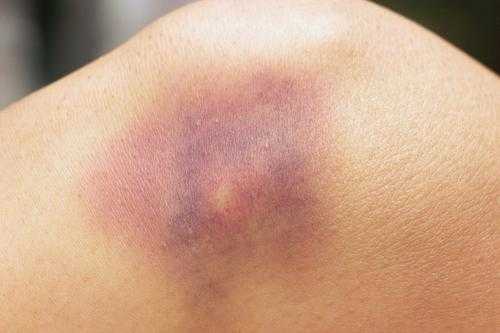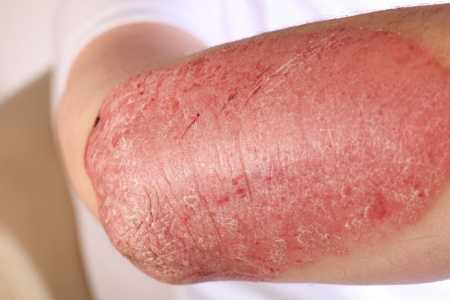
Red stain? That’s behind it!
Red spots on the skin can have different causes. First indications of the trigger may be the spread of the pustules: Do the red spots on the whole body or only on certain parts of the body like the face, neck, chest or stomach? In addition, the appearance of the spots and the duration of the rash also play a role. Also important for the diagnosis is whether the rash itches or burns. In the following, we have compiled the most common causes of red spots on the skin.
Red spots on the skin
Red spots are not an independent disease, but Symptom of a disease. They can be distributed all over the body or only locally.
A bilateral rash is often indicative of an internal response of the body, while uneven spots indicate exposure to external factors. Often the rash is accompanied by other symptoms such as burning, itching, pain or swelling.
Causes of red spots
Red spots can have many causes, among others they can be a reaction of the body to an infection with viruses or bacteria. It can also be a defense reaction of the body to an allergen. In an allergic reaction, the rash is often associated with itching – but this is also the case for some skin diseases.
As a rule, red spots on the skin are based on harmless causes – but serious triggers are also possible. Therefore, you should always consult a doctor if you discover a skin rash.
The following is an overview of the main causes behind red spots on the body. This can provide initial clues to the possible cause, but not replace the visit to the doctor.
Skin diseases as a cause
Red spots on the body are often caused by a skin disease. Skin diseases can have different causes, often an allergic reaction is the trigger. In addition, genetic factors and hormonal changes also play a role. The following is a list of the most important skin diseases with their typical symptoms.
- Acne: Acne is the most common skin disease in Germany. Pus-filled pimples and red nodules are typical, which occur preferentially on the face, but also on the back, chest, arms and shoulders.
- eczema: Atopic dermatitis is a chronic skin disease typically characterized by inflamed skin that can itch intensely. In addition, the skin is often dry and flaky. The red spots may be either bumpy or chronic.
- Psoriasis: In psoriasis, red, inflamed plates are formed on the skin, which are covered with white scales. Sometimes the rash can itch very much.
- Hives: Hives are characterized by severe itchy wheals on the skin. The red spots can have a variety of triggers – including certain drugs and food, but also pressure, heat and cold in question.
- Knötchenflechte: In nodular lichen, a larger group of reddish, itchy nodules develop on the skin or mucous membranes. They are especially common on the inside of the wrists or ankles and on the lower leg.
- rosacea: Rosacea is characterized by dilated veins and blotchy red skin on the face. The redness of the nose, cheeks and forehead may develop into pustules and pustules over time.
- Scabies: In scabies, parasites such as mites cause a red, itchy rash. In addition to mites, other parasites such as head, garment or pubic lice can cause the red spots. The latter primarily cause a rash in the armpits, chest and pubic hair.
- Skin fungus: Fungal skin diseases are manifested by slightly red, itchy, flaky areas of the skin. Depending on the type of pathogen, they can settle on a wide variety of body parts – especially often they appear in skin folds.
Red spots due to illness
In addition to skin diseases and infectious diseases come as a cause of red skin spots in question. Among other things, the following disorders may be associated with a reddening rash:
However, not all illnesses necessarily have to be accompanied by red spots. Sometimes the rash is completely absent, sometimes it occurs only in certain stages.
Allergic reaction as a cause
Red spots on the body are not always triggered by a disease – it can also be an allergic reaction cause. Allergens can affect the body either through the skin or through the mucous membranes. Often, in addition to the rash, allergy symptoms such as runny nose, cough, or itching may occur.
The body can be allergic to various substances, such as pollen, certain foods or cosmetics. Contact with chemicals or the use of medications such as penicillin can also cause a red rash.
In addition, red spots on the skin can also occur as part of a sun allergy.
Red spots in babies and children
In babies and children, red patches on the skin may indicate one of the typical teething troubles. Not all of these diseases, however, occur exclusively in children.
- Dreitagefieber: Three-daytime fever typically breaks out in children between one and three years old. It manifests itself first by a high fever, later also by a pale red rash. The small red spots occur mainly in the neck and on the trunk, but can also extend to the face.
- Chickenpox: Chickenpox affects mainly children in kindergarten and school age. When an infection occurs on the whole body – especially in the face and on the trunk – red blisters on itchy.
- Rubella: Rubella is usually manifested initially by symptoms such as enlarged lymph nodes or mild fever. Later, the typical rash occurs, which often begins behind the ears and spreads from there across the face all over the body.
- Scarlet: Scarlet fever is characterized by severe throat and swallowing complaints and fever. It often comes in the further course of the disease also to a thick, fine-blotched rash and raspberry red tongue.
- Fifth disease: Ringelrötel occur mostly in children in kindergarten or primary school. With them, it comes first to cold-like symptoms. Later, a red, itchy rash on the cheeks can be noticeable. This can spread further along the inside of the arms and legs along a ring.
- Measles: Measles can affect children over six months old. If the illness breaks out, flu-like symptoms such as fever, cough and runny nose occur. In the second phase of the disease, red spots appear, which after some time run into each other. However, unlike chickenpox, the rash does not itch.
In case of doubt to the doctor
If you discover red spots on your body that do not resolve themselves, you should always consult a doctor. This is especially necessary if the rash occurs suddenly and very severely and without apparent cause. Similarly, a visit to a doctor is urgently needed if you suffer from other symptoms such as shortness of breath, fever, pain or other threatening signs.
If the cause of the red spots is not clear after a detailed interview and evaluation of the rash, the doctor will presumably perform a blood test. Likewise, a tissue sample or a smear of the skin may be necessary. In case of suspected allergy, the doctor can perform an allergy test.
Treat red spots
How best to treat the rash always depends on the underlying cause. First, the doctor will try to alleviate the symptoms and then fight the cause. Often come to treat the symptoms cortisone-containing preparations in the form of ointments, creams or tablets. Some skin diseases can also be treated well with a light therapy.
If there is an infectious disease, can Antivirals or antibiotics help to reduce the disease faster. However, some infectious diseases also heal on their own.
If an allergic reaction is the cause, the intake of antihistamines recommended. They weaken the defense reaction of the body and thereby relieve the symptoms. In the future, the allergy-causing substance should then be avoided as far as possible.
Updated: 23.10.2018 – Author: Kathrin Mehner
Related Posts
-

Skin redness – causes, treatment & help
erythema erythema respectively. red skin or reddish patches of skin are to be considered apart from rashes, although they have similar appearance…
-

Suddenly blue spots? – causes – treatment
Site: www.toplektuere.de Suddenly bruises? – Causes treatment Blue and painful stains usually occur when a part of your body is severely damaged, for…
-

Skin diseases – causes, complaints & therapy
skin diseases skin diseases are more or less harmful diseases of the skin and mucous membranes. The spectrum ranges from harmless skin diseases such as…
-

Eye diseases: from my vision to the star, lasikon
Eye Diseases: Summary list of causes, symptoms and therapies The eye as sense organ The eyes are among the most important sensory organs of the human…
